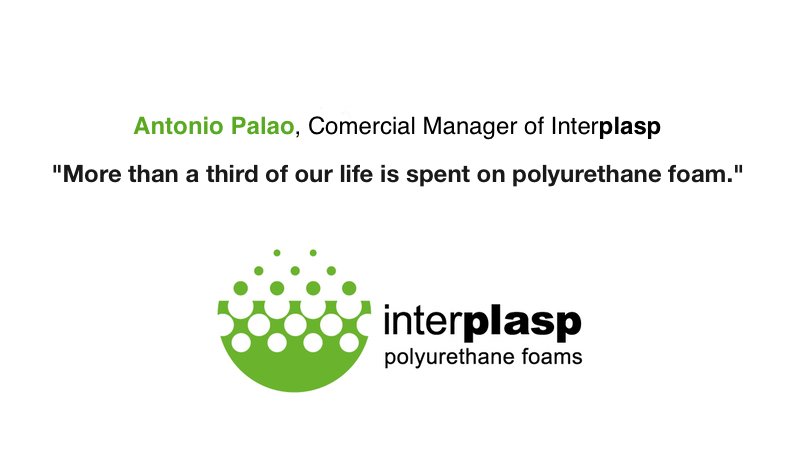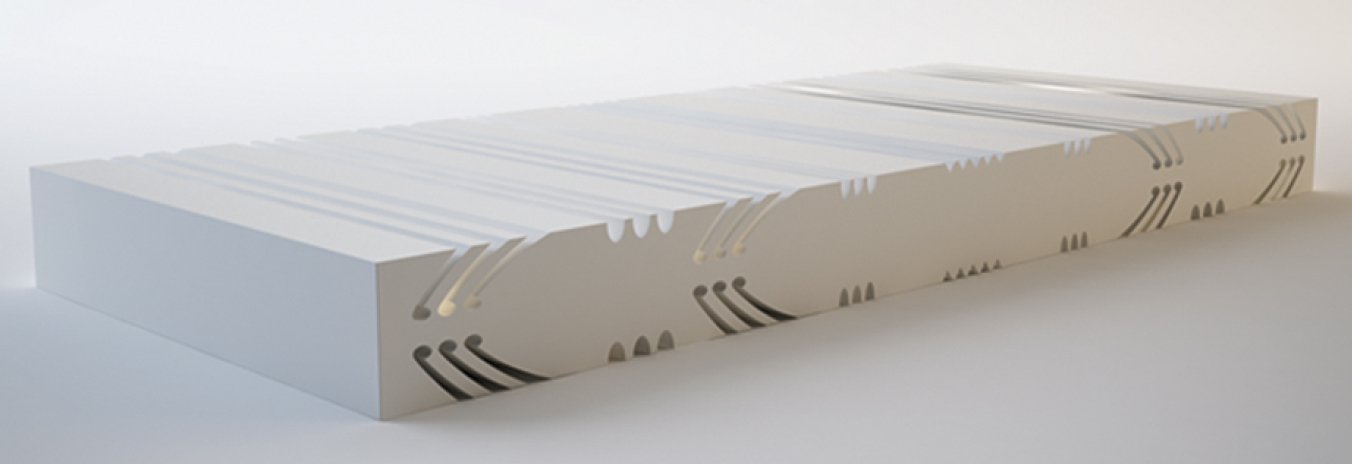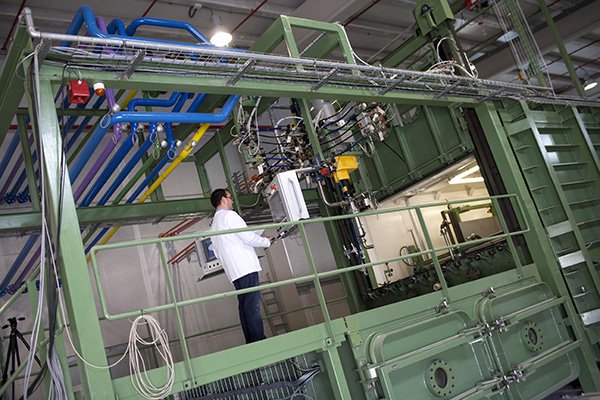Interview with the Comercial Manager of Interplasp, Antonio Palao / Entrevista con el Director Comercial de Interplasp, Antonio Palao
What is the polyurethane foam, and what is it for?
AP: «The polyurethane foam is present in all spheres of our daily lives. We spent more than a third of our lives on this material. We do not realize it because we can’t see it at first glance; it is hidden behind mattresses, upholstery, sofas and lots of materials as may be packaging, footwear, etc.»
How is it made?
AP: «The polyurethane foam is produced by the chemical reaction of various components: two parts of polyol and one part of toluene diisocyanate, called TDI. To carry out satisfactorily these materials, we must have the appropriate technology and equipment for it.»
What technology has the company?
AP: «In Interplasp we have made a great effort in the last five years. We have invested about 12 million euros in R&D. The highlight would be that we have incorporated the VPF technology in our manufacturing process.»
What’s VPF?
AP: «The VPF technology allows us to produce controlling atmospheric pressure. Moreover, we do not need CO2 or methylene chloride, what makes our products environmentally friendly and, therefore, healthy for people.»
What kind of companies can be benefited by this material?
AP: «All companies that use polyurethane foam products. For example: mattress manufacturers, the upholstery industry, the bath sponges, the car industry (every car is coated inside with polyurethane foam)… In Interplasp, to meet demands of all our customers, we have cutting, profiling, punching and casting machines.»
¿Para qué sirve la espuma de poliuretano?
AP: «La espuma de poliuretano está presente en todos los ámbitos de nuestra vida cotidiana. Pasamos más de un tercio de nuestra vida sobre este material. No nos damos cuenta porque no lo vemos a simple vista; está oculta tras colchones, tapicería, sofás y un montón de materiales, como puede ser embalaje, calzado, etc.»
¿Cómo se fabrica?
AP: «La espuma de poliuretano se produce mediante la reacción química de varios componentes que serían dos partes de poliol y una diisocianato de tolueno, llamado TDI. Para llevar a cabo de manera satisfactoria estos materiales, debemos de contar con la tecnología y el equipo apropiado para ello.»
¿Con qué tecnología cuenta Interplasp?
AP: «En Interplaps hemos hecho, en los últimos 5 años, un gran esfuerzo. Hemos invertido cerca de 12 millones de euros en I+D. Lo más destacado sería que hemos incorporado en nuestro proceso de fabricación la tecnología VPF.»
¿Qué es VPF?
AP: «La tecnología VPF nos permite producir controlando la presión atmosférica. Es más, gracias a ellos no necesitamos ni cloruro de metileno ni CO2, lo que convierte a nuestros fabricados en los más respetuosos para el medio ambiente y, por lo tanto, saludables para las personas.»
¿Qué tipo de empresas pueden beneficiarse de este material?
AP: «Todas las empresas que utilizan la espuma de poliuretano para sus productos. Por ejemplo: los fabricantes del sector del colchón, del sector de la tapicería, de las esponjas de baño, del sector de automóvil (todo automóvil por dentro va recubierto de espuma de poliuretano)… En Interplasp, para cumplir con las demandas de todos nuestros clientes, contamos con la maquinaria de corte, perfilado, perforado y colado.»




